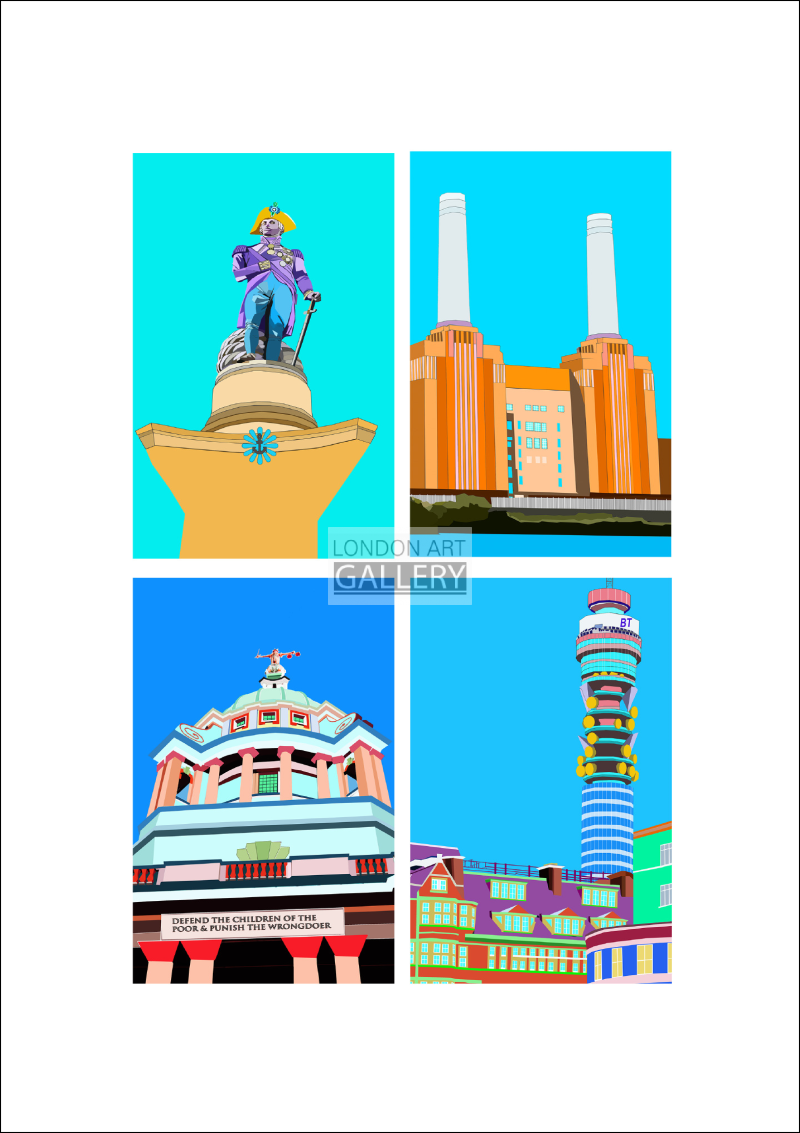Description
Nelson’s Column is a monument in Trafalgar Square in central London built to commemorate Admiral Horatio Nelson, who died at the Battle of Trafalgar in 1805. The monument was constructed between 1840 and 1843 to a design by William Railton at a cost of £47,000. It is a column of the Corinthian order built from Dartmoor granite. The Craigleith sandstone statue of Nelson is by E.H. Baily and the four bronze lions on the base, added in 1867, were designed by Sir Edwin Landseer.
The pedestal is decorated with four bronze relief panels, each 18 feet (5.5 m) square, cast from captured French guns. They depict the Battle of Cape St Vincent, the Battle of the Nile, the Battle of Copenhagen, and the death of Nelson at Trafalgar. The sculptors were Musgrave Watson, William F. Woodington, John Ternouth, and John Edward Carew, respectively.
It was refurbished in 2006 at a cost of £420,000, at which time it was surveyed and found to be 14 ft 6 in (4.4 m) shorter than previously supposed. The whole monument is 169 ft 3 in (51.6 m) tall from the bottom of the pedestal to the top of Nelson’s hat.
Battersea Power Station is a decommissioned coal-fired power station located on the south bank of the River Thames, in Nine Elms, Battersea, an inner-city district of South West London. It comprises two individual power stations, built in two stages in the form of a single building. Battersea A Power Station was built in the 1930s, with Battersea B Power Station to the east in the 1950s. The two stations were built to a nearly identical design, providing the long-recognized four-chimney layout. The station ceased generating electricity in 1983, but over the past 50 years it has become one of the best known landmarks in London and is Grade II listed building. The station’s celebrity owes much to numerous popular culture references, which include the cover art of Pink Floyd’s 1977 album Animals and its appearance in the 1965 Beatles’ film Help!
The station is one of the largest brick buildings in the world and is notable for its original, lavish Art Deco interior fittings and decor. The building has remained largely unused since its closure, and the condition of the structure has been described as “very bad” by English Heritage, which included it in its Heritage at Risk Register. The site was also listed on the 2004 World Monuments Watch by the World Monuments Fund.
Old Bailey – The Central Criminal Court of England and Wales, commonly known as the Old Bailey from the street on which it stands, is a court in London and one of a number of buildings housing the Crown Court. Part of the present building stands on the site of the medieval Newgate jail, on a road named Old Bailey that follows the line of the City of London’s fortified wall (or bailey), which runs from Ludgate Hill to the junction of Newgate Street and Holborn Viaduct. The Old Bailey has been housed in several structures near this location since the 16th century, and its present building dates from 1902.
The Crown Court sitting at the Central Criminal Court deals with major criminal cases from within Greater London and in exceptional cases, from other parts of England and Wales. Trials at the Old Bailey, as at other courts, are open to the public; however, they are subject to stringent security procedures.
BT Tower is a communications tower located in Fitzrovia, London, owned by BT Group. It has been previously known as the GPO Tower, the Post Office Tower and the Telecom Tower. The main structure is 177 metres (581 ft) high, with a further section of aerial rigging bringing the total height to 191 metres (627 ft). It should not be confused with the BT Centre (the global headquarters of BT). Its Post Office code was YTOW.
Upon completion it overtook the Millbank Tower to become the tallest building in both London and the United Kingdom, titles it held until 1980, when it in turn was overtaken by the NatWest Tower.





